9 nights / 11 days

Day 1 | Depart USA
Our tour begins with an overnight flight to Glasgow, Scotland.
Oban
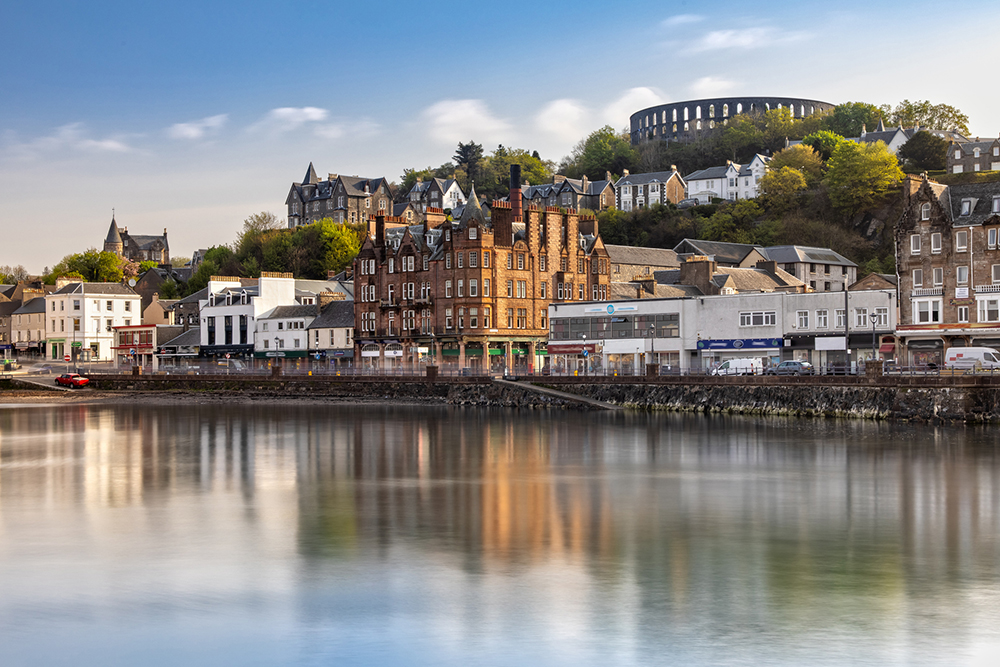
Day 2 | Oban
Upon arrival in Glasgow, we’ll meet our Faith Journeys tour manager and transfer by motor coach to St. Conan’s Kirk, located on the banks of Loch Awe. Continue to Oban (meaning The Little Bay) for a Welcome Dinner and overnight. Despite its small size, Oban is one of Scotland’s most popular resorts and occupies a beautiful setting ato the Firth of Lorn in a near perfect horseshoe bay, protected by the island of Kerrera. To the north is the long low island of Lismore, and the mountains of Morvern and Ardgour.
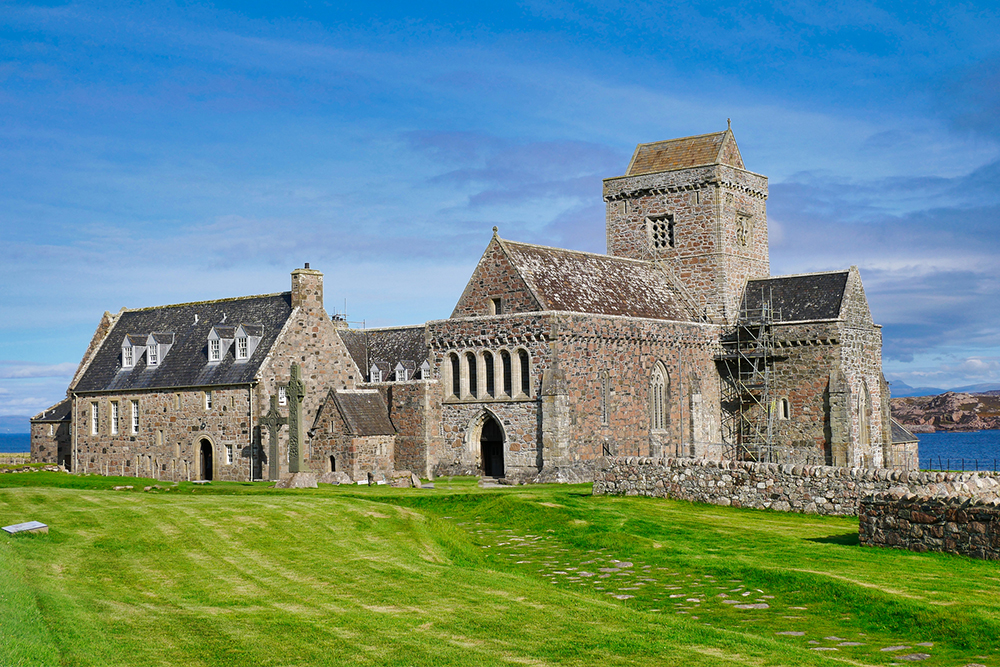
Day 3 | Isles of Mull & Iona
Today’s excursion to the Isles of Mull and Iona begins with a ferry ride to Craignure on the Isle of Mull, island home to over 250 different bird species. Minke whales, porpoises and dolphins are among the sea life visible from boat tours off the coast of Mull. Another ferry (from Fiannphort) will take us to the Isle of Iona, centre of Irish monasticism for centuries and presently known for its tranquility and natural beauty. We will visit Iona Abbey, of particular historical and religious interest to pilgrims and visitors alike because it is the best-preserved ecclesiastical building surviving from the Middle Ages in the Western Isles of Scotland. Though modest in comparison to medieval abbeys elsewhere, it has a wealth of fine architectural detail and monuments of many periods. For example, in front of the Abbey stands the 9th century St Martin’s Cross, one of the best-preserved Celtic crosses in the British Isles. According to tradition, the monastery was founded in 563 by the monk Columba (also known as Colm Cille) and his twelve companions who went into exile on Iona and founded a monastery. Known as a great center of learning with a hugely successful scriptorium, the religious settlement of Iona played a crucial role in Scotland’s conversion to Christianity. The Iona Cathedral and the religious settlement are now under the administration of the National Trust for Scotland (1979). But long before St Columba landed here in 563, the island was a Druid shrine known originally as “Hy.” The abbey graveyard contains the graves of many early Scottish Kings (including Macbeth), as well as kings from Ireland, Norway and France. We’ll return via the same ferries to Oban for dinner and another overnight stay.
Fort William
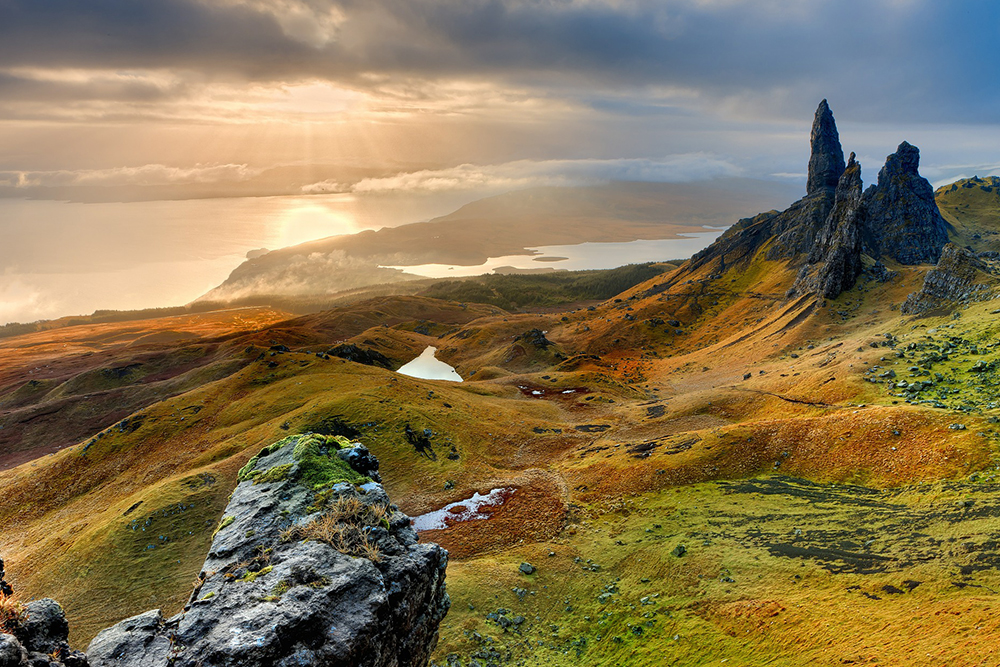
Day 4 | Isle of Skye & Fort William
This morning we depart Oban and journey to Fort William. En route we stop for a quick photo stop at the Glenfinnan Monument, erected in 1815 to mark the place where Prince Charles Edward Stuart (“Bonnie Prince Charlie”) raised his standard, at the beginning of the 1745 Jacobite Rising. We’ll ferry from Mallaig to the Isle of Skye, the largest and most northerly island in the Inner Hebrides of Scotland, and renowned for its picturesque harbors and varied scenery. Visit the Armadale Castle, a ruined country house in a spectacular setting and former home of the MacDonalds Clan. Although the castle was abandoned by the Macdonald family in 1925 and has fallen into ruin, the gardens around the castle have been maintained, and are now home to the Clan Donald Centre, which operates the Museum of the Isles. Tonight, we’ll dine and overnight in Fort William, the largest town in the highlands of Scotland and an ideal touring center (known for hill-walking and climbing) because it is located in the shadows of Britain’s highest mountain, Ben Nevis.
Inverness
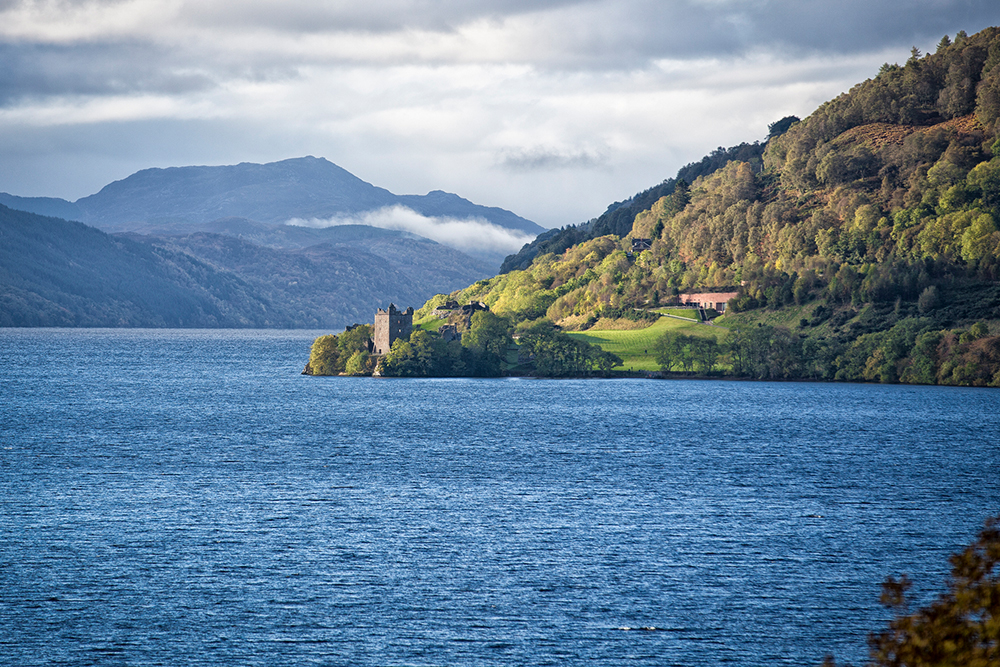
Day 5 | Drumnadrochit & Loch Ness
En route to Inverness (meaning ‘mouth of the River Ness’), regarded as the capital of the Highlands of Scotland, we’ll stop at Drumnadrochit on the west shore of Loch Ness where we’ll enjoy beautiful views of the area and a visit to the Loch Ness Monster Exhibition. Is the mythical “monster fish”… “sea serpent”… “dragon” (affectionately nicknamed Nessie since the 1950s) REAL? Legend has it that the earliest report of a monster associated with the vicinity of Loch Ness appeared in the Life of St. Columba by Adomnán written in the 7th century. According to Adomnán, the Irish monk Columba was staying in the land of the Picts with his companions when he came across the locals burying a man by the River Ness. They explained that the man had been swimming in the river when he was attacked by a “water beast” that had mauled him and dragged him under. Hearing this, Columba stunned the Picts by sending one of his followers to swim across the river. The beast came after him, but Columba was said to have made the sign of the cross and commanded: “Go no further. Do not touch the man. Go back at once.” The beast immediately halted as if it had been “pulled back with ropes” and fled in terror, and both Columba’s men and the pagan Picts praised God for the miracle. Visit the Culloden Battlefield, site of the bloody last battle of Jacobite Rising. We’ll continue on to Inverness/Cairngorms area for dinner and an overnight stay.
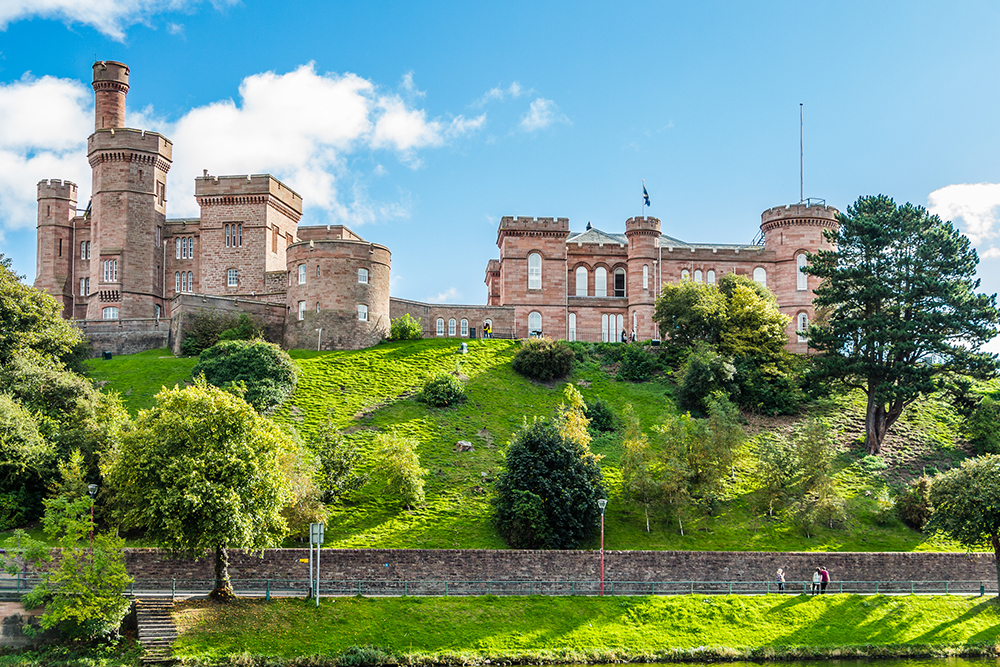
Day 6 | Inverness
Our morning tour of Inverness, an important centre for bagpipe players and lovers, includes a visit to St. Andrew’s Cathedral (completed by 1869 although a lack of funds precluded the building of the two giant spires of the original design), the Inverness Museum and Art Gallery, and Inverness Castle. Today’s red sand stoned Inverness Castle, built in 1836, sits on a cliff overlooking the River Ness on the site where castles have stood since 1057. The castle itself is not open to the public but the grounds are. We’ll then travel about 10 miles to see Cawdor Castle, set amid magnificent gardens, it is perhaps best known for being the 11th century home of Shakespeare’s character, MacBeth, and scene of the murder of King Duncan. However, the Bard’s story is highly fictionalized because Cawdor Castle dates from the late 14th century. A curious feature of the castle is that it was built around a small, living holly tree, the remains of which may still be seen in the lowest level of the tower. Modern scientific testing has shown that the tree died in approximately 1372 (Cawdor Castle is closed October – May. Private group tours can be arranged at a supplement).
Edinburgh
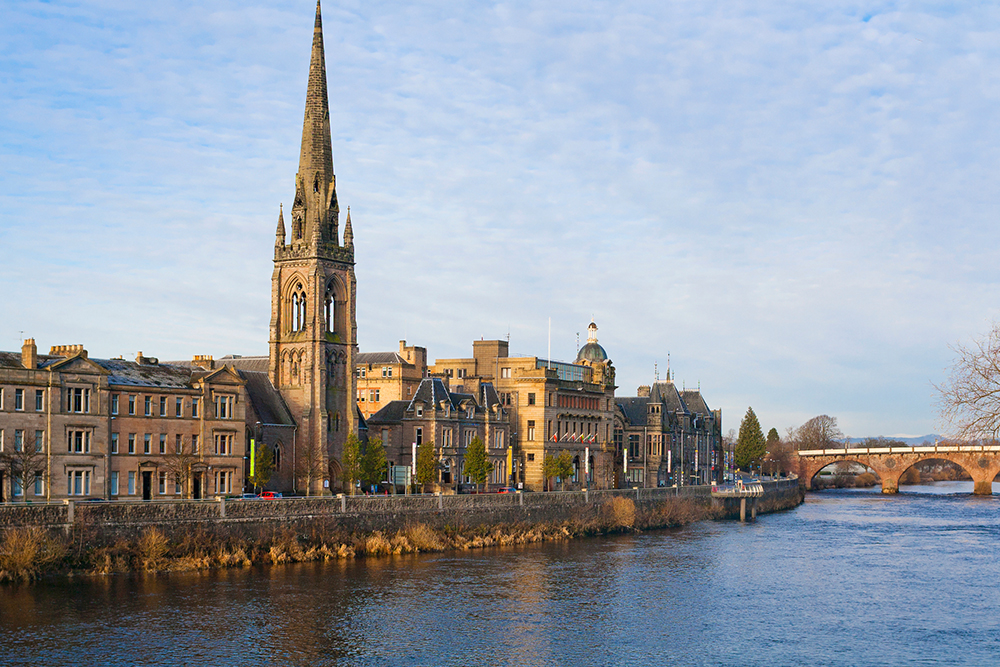
Day 7 | Perth & Edinburgh
Before reaching the day’s destination: Edinburgh, we’ll stop in Perth (known as The Fair City since the publication of the story, Fair Maid of Perth by the Scottish writer Sir Walter Scott in 1828) to visit St. John’s Presbyterian Church, which is, architecturally and historically, the most significant building in Perth. The majority of the present church was constructed between 1440 and 1500, and although much altered over its tumultuous history, its tower and lead-clad spire continue to dominate the Perth skyline. It was in 1559 at St. John’s that reformer John Knox launched his campaign against idolatry, leading to the “purging” of churches and the destruction of monasteries. Near Perth are Neolithic standing stones and circles dating from about 4,000 B.C. following the introduction of farming in the area. After a full, day, we’ll continue on to Edinburgh, affectionately nicknamed Auld Reekie (Middle Scots for Old Smoky) because in olden times its chimneys would spew thick columns of smoke into the air. Lovely Edinburgh is also called Athens of the North because of its striking mix of beauty, culture, and the arts. Here we’ll enjoy a dinner and an overnight stay.
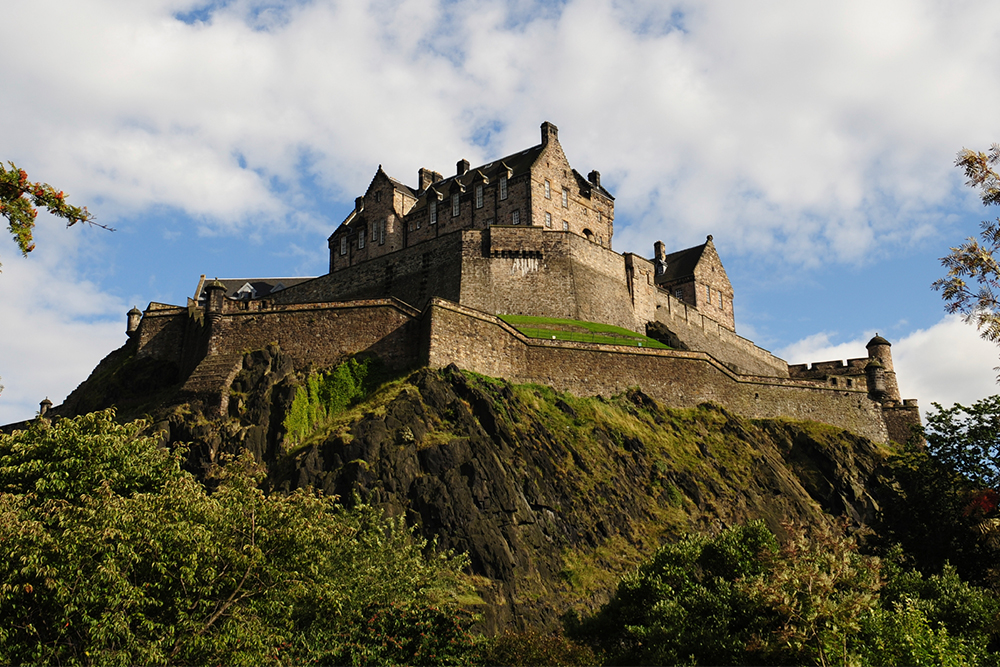
Day 8 | Edinburgh
Our half-day guided tour of Edinburgh will begin fittingly with what may be the most recognizable symbol of Scotland: Edinburgh Castle which sits atop the volcanic Castle Rock and not only dominates the skyline but also provides a great view of the city. The castle, dating back as far as the 9th century B.C. (although the nature of early settlement is unclear), was a royal residence from the 12th century until the Union of the Crowns in 1603. From the later 17th century, the castle became a military base with a large garrison; many of the buildings we’ll explore today are from its use as a military garrison. We’ll also see the Honours of Scotland, known as the Scottish regalia and the Scottish Crown Jewels which date from the 15th and 16th centuries and are the oldest set of crown jewels in the British Isles. Other landmarks on our tour include the Royal Scots Regimental Museum, Arthur’s Seat, Charlotte Square, the Royal Mile (approximately one Scots mile long and runs from Edinburgh Castle at the top down to Holyrood Abbey), Sir Walter Scott Monument, St. Andrew Square and St. Giles. John Knox preached his first sermon in Edinburgh’s St. Giles’ Cathedral, and a statue of him stands in the courtyard of the University of Edinburgh’s Faculty of Divinity. When Scotland formally ratified the reformed Protestant religion in 1560, Knox was appointed minister of the Church of St. Giles, and often preached from the pulpit in the cathedral’s Thistle Chapel, a small, but exquisite, chapel with carved and painted fittings of extraordinary detail. A high testimony was pronounced at Knox’s grave in the churchyard of St. Giles by the Earl of Mortoun: “Here lyeth a man who in his life never feared the face of man, who hath been often threatened with dagger, but yet hath ended his days in peace and honor.”
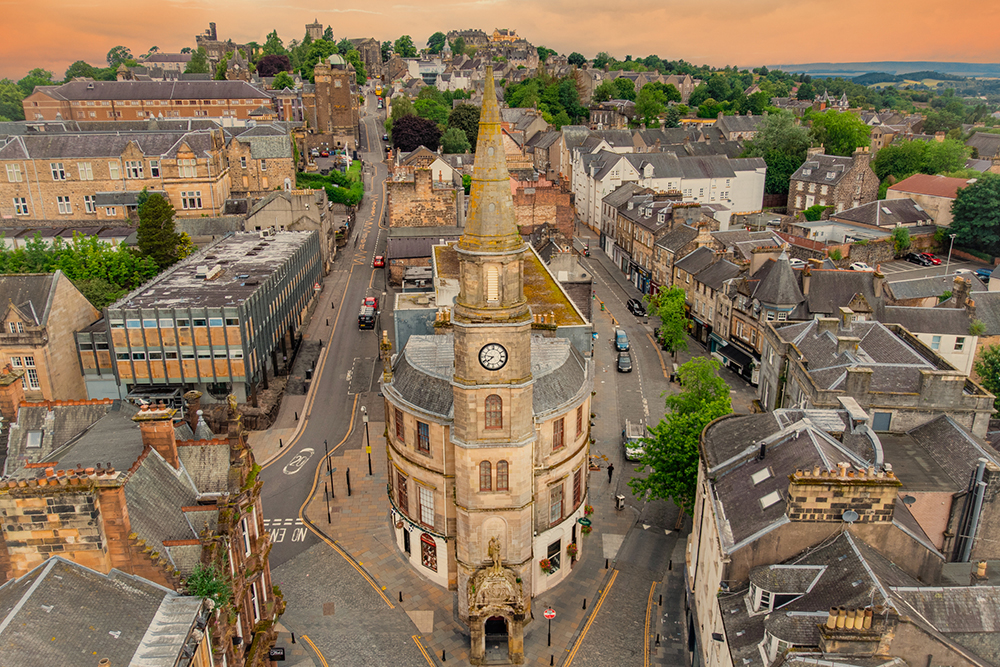
Day 9 | Haddington & Stirling
The morning finds us in Haddington, located on the north-east bank of the River Tyne. Once famous for its mills, Haddington is the birthplace and childhood home of John Knox. We’ll enjoy a visit to the Haddington House Gardens (which includes a wild meadow, sunken garden, and orchard) and St. Mary’s Church, which, according to the advice of John Knox, was restored “frae the tower to the West door”. Thus the nave became the church and the choir and transepts were left ruined until the whole church was restored in the 1970s (the Lammermuir pipe organ was built in 1990). We’ll enjoy an afternoon excursion to one of the largest and most important castles in Scotland: Stirling Castle which sits atop Castle Hill and is surrounded on three sides by steep cliffs. The panoramic view of Stirling from this impregnable medieval fortress (although what we will see dates largely from the 15th and 16th centuries) is truly magnificent. It is also where several Scottish Kings and Queens have been crowned, including Mary, Queen of Scots, in 1543. John Knox preached in Stirling Castle and also in the parish church in Stirling, a town renowned for its unique cobblestoned roads and charming shops. We’ll return to Edinburgh for dinner and another overnight stay.
Glasgow
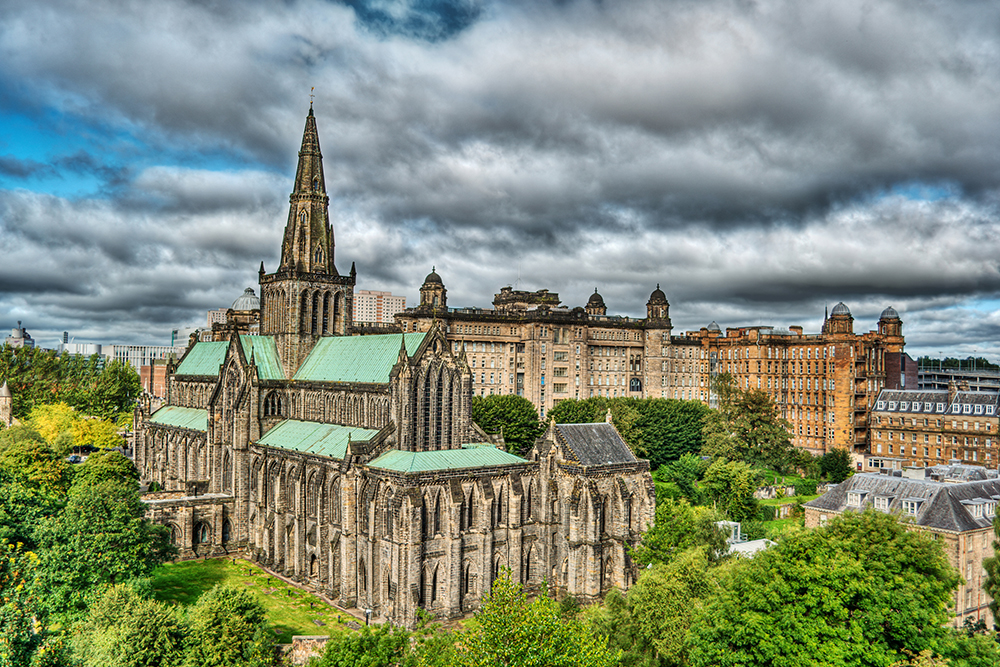
Day 10 | Glasgow
This morning we depart Edinburgh and journey to Glasgow. Upon arrival in Glasgow enjoy a panoramic tour of the city and visit Glasgow Cathedral, St. Mongo’s Museum of Religious Life and the National Piping Centre. Tonight, we’ll gather together for a Farewell Dinner for our final night together. Overnight in Glasgow.
Depart for Home

Day 11 | Depart for Home
With hearts full of gratitude and memories for a lifetime, we transfer to the Glasgow airport for the return flight home to the USA.
